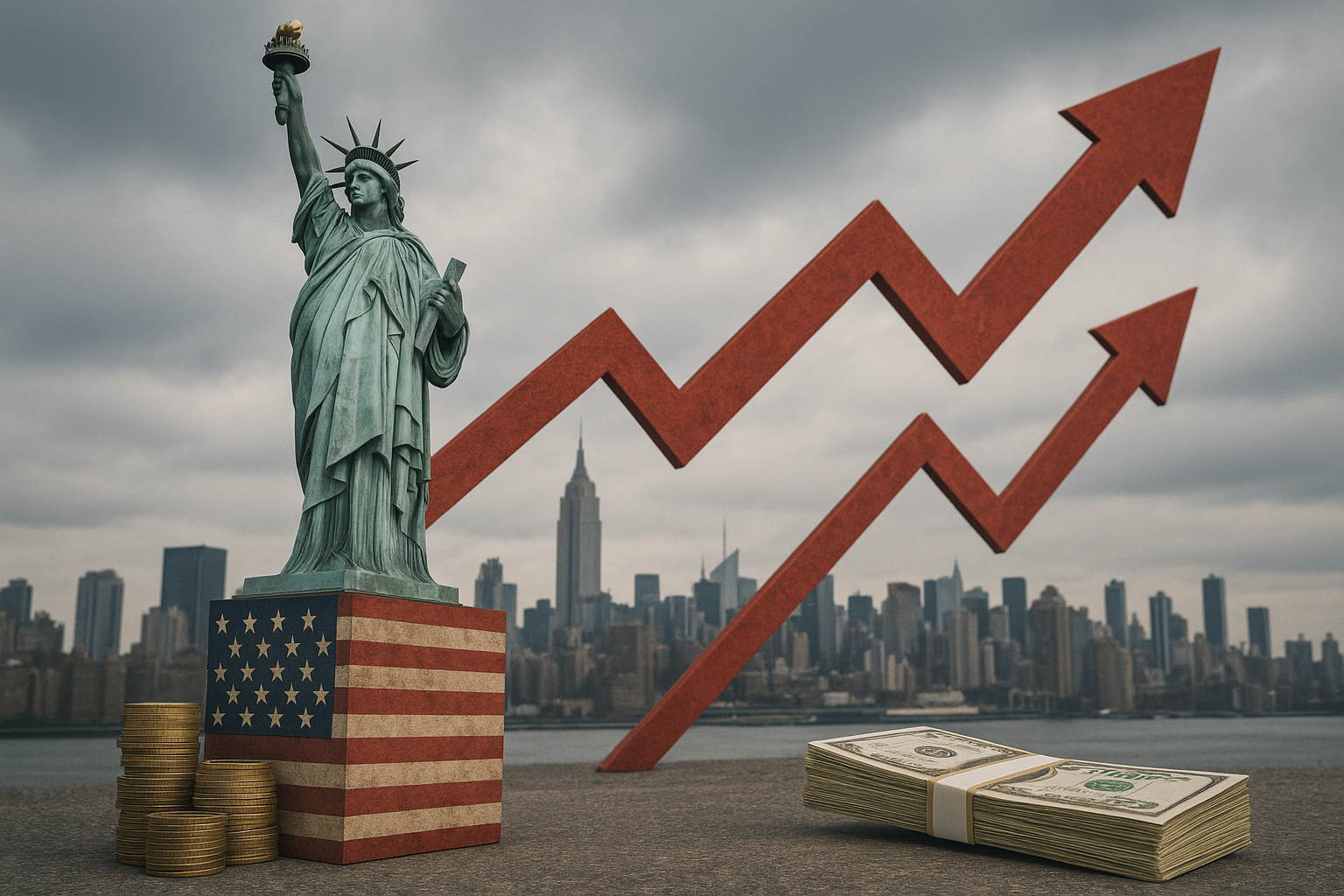Rising Debt, Rising Rates: How U.S. Fiscal Imbalances Impact Long-Term Borrowing Costs
This IMF study finds that rising U.S. debt and deficits significantly increase long-term interest rates, with the relationship strengthening in recent years. Using long-term projections and expanded controls, it warns that fiscal deterioration could drive up future borrowing costs. Ask ChatGPT

A new IMF Working Paper, "The Impact of Debt and Deficits on Long-Term Interest Rates in the US", authored by Davide Furceri, Carlos Goncalves, and Hongchi Li of the IMF’s Fiscal Affairs Department, sheds fresh light on how fiscal variables shape the path of long-term interest rates in the United States. Drawing on data from 1976 to 2025 and expanding the seminal methodology developed by Thomas Laubach in 2009, the authors provide a comprehensive reassessment using long-horizon projections. This research is grounded in robust datasets from institutions such as the Congressional Budget Office (CBO), the Federal Reserve, and the United Nations, and it aims to settle a central policy debate: has the US economy become less vulnerable to the interest rate implications of mounting debt and deficits?
The answer is nuanced. While long-term interest rates have been on a declining trend since the 1980s, even as fiscal deficits and debt levels climbed, this apparent decoupling may not be permanent. The paper’s findings suggest that the influence of debt and deficits on long-term interest rates has not diminished, but has instead re-emerged with greater force in recent years. The temporary lull in sensitivity seen during the late 1990s and early 2000s, when the US was running surpluses and maintaining prudent debt levels, has given way to renewed fiscal stress, especially after the Global Financial Crisis and more dramatically following the COVID-19 pandemic.
Long-Term Projections Offer Clearer Signals than Cyclical Data
To sidestep the short-term noise that typically clouds empirical assessments of fiscal policy, the authors rely on five-year-ahead projections of debt, deficits, and interest rates from CBO forecasts. These long-range expectations are better insulated from transitory business cycle shocks and allow for a more accurate estimation of structural relationships. The paper finds that a projected 10-percentage-point increase in the debt-to-GDP ratio is associated with a 20–30 basis point rise in long-term interest rates. Similarly, a 1-percentage-point improvement in the projected primary balance corresponds to a decline in rates by roughly the same magnitude. This relationship holds across a variety of dependent variables, including 10-year Treasury yields, forward rates, and term premia.
To strengthen the analysis, the researchers introduce a wide array of control variables. These include projections of real GDP growth, population growth rates (sourced from the UN World Population Prospects), foreign holdings of US Treasuries, short-term interest rates as a proxy for monetary policy, and risk sentiment captured by the Excess Bond Premium. Such additions improve precision and control for simultaneous influences on both fiscal positions and interest rates.
A Relationship That Evolves Over Time
One of the most revealing contributions of the study is the time-varying nature of the debt-interest rate relationship. During the years surrounding the turn of the century, a period marked by fiscal consolidation and declining debt levels, the influence of fiscal variables on long-term interest rates was weak to nearly nonexistent. However, rolling-window regressions show that since the mid-2000s, particularly in the post-COVID period, the sensitivity of long-term rates to fiscal outlooks has intensified significantly.
This shift is clearly depicted in the paper’s visual analysis. Figures based on 40-observation rolling regressions (about 20 years per window) show that the coefficients linking projected debt and fiscal balances to long-term rates rose sharply after 2010. This occurred despite short-term rates being historically low, suggesting that long-term borrowing costs are increasingly influenced by investor perceptions of fiscal sustainability rather than the monetary stance alone.
New Insights into Term Premia and Market Risk
An important innovation in this paper is its application of Laubach’s methodology to bond term premia, an approach not previously explored in detail. Term premia measure the excess yield investors demand for holding long-term bonds instead of rolling over shorter maturities. The study finds that debt and deficits not only impact nominal yields but are also strongly associated with increases in term premia. This indicates a growing market risk premium attributed to fiscal deterioration.
These findings suggest that investors are pricing in more uncertainty and fiscal risk into long-term interest rates than in previous decades. In other words, the cost of government borrowing is no longer shaped merely by supply-demand mechanics or inflation expectations, but also by the perceived sustainability of fiscal policy over time.
Policy Implications: Complacency Comes at a Cost
The study delivers a cautionary message for US policymakers. The prolonged period of low interest rates may have created a sense of complacency about the dangers of high public debt. However, the empirical evidence suggests that this benign environment could reverse. As fiscal positions worsen, even small changes in investor sentiment may trigger disproportionately large shifts in borrowing costs.
This implies that relying on persistently low interest rates to justify fiscal expansion is risky. Market conditions can, and do, change, and when they do, the cost of servicing debt may rise swiftly. For economists, central bankers, and fiscal authorities, the message is clear: prudent fiscal management remains vital, and its influence on long-term macro-financial stability cannot be discounted. This paper reaffirms that as the US heads into an era of elevated debt and continued fiscal expansion, its long-term interest rate path will increasingly reflect these budgetary realities.
- READ MORE ON:
- IMF
- Congressional Budget Office
- Federal Reserve
- Global Financial Crisis
- CBO
- FIRST PUBLISHED IN:
- Devdiscourse
ALSO READ
Testing PPP in Africa: IMF Study Reveals Euro and Renminbi as Key Currency Anchors
From Dollars to Crypto: IMF Tracks $1 Quadrillion in Global Cross-Border Payments
IMF's $500 Million Boost to Ukraine Amid Ongoing Challenges
IMF Completes Eighth Review of Ukraine's Support Program Amid Ongoing Risks
Spain Channels $1.9 Billion in SDRs to IMF for Global Aid










